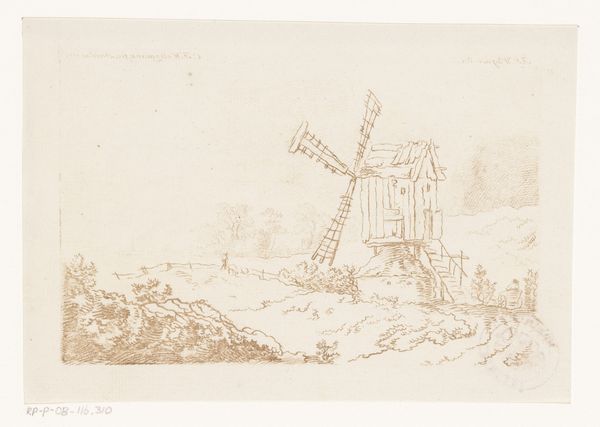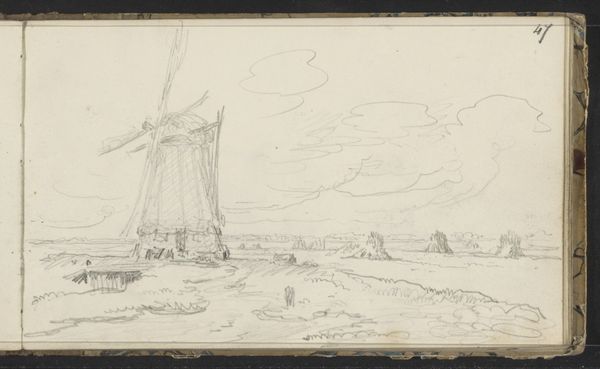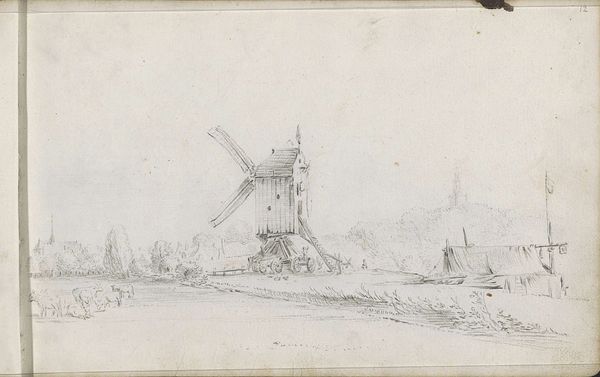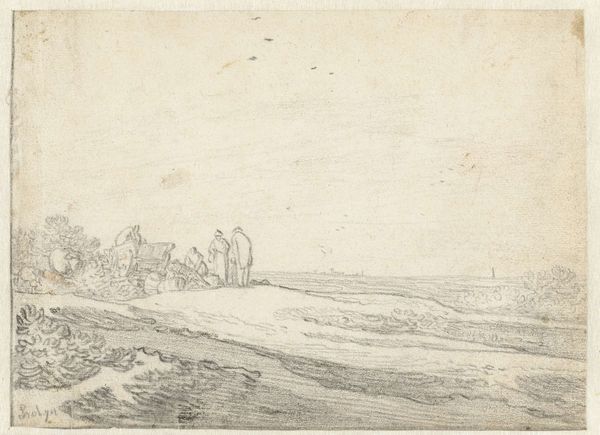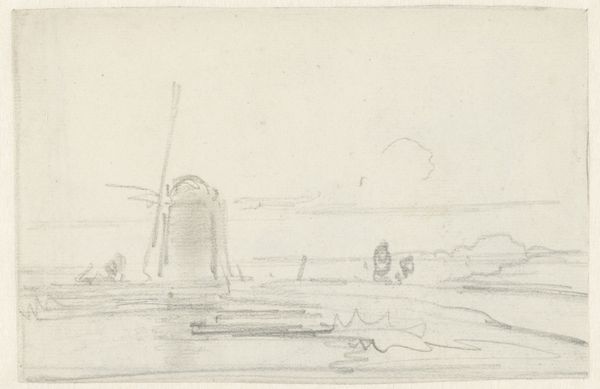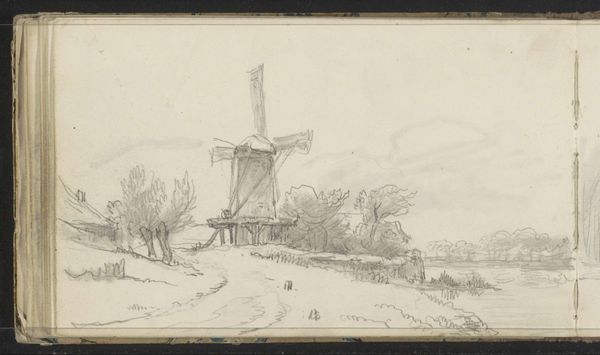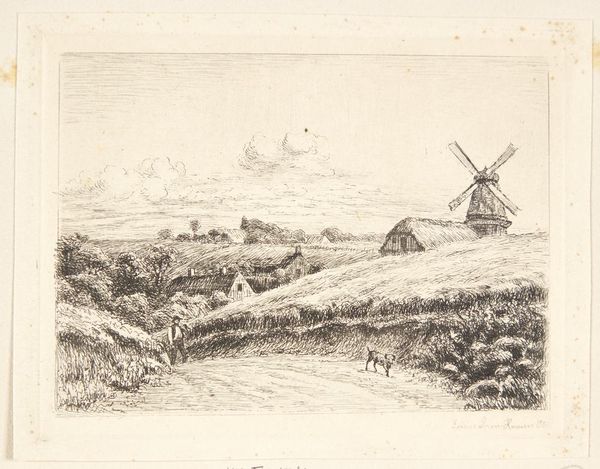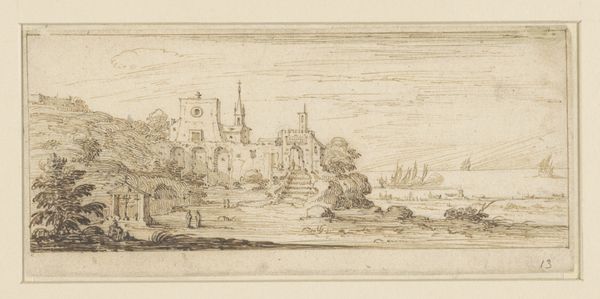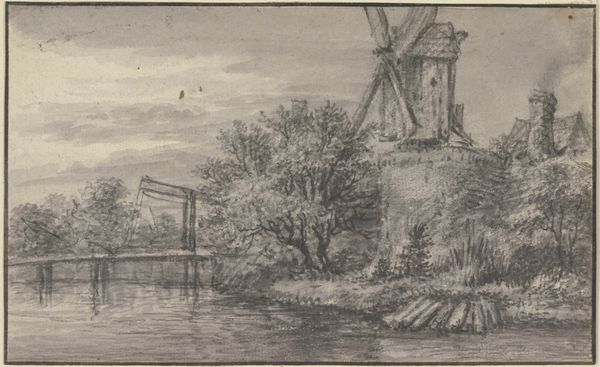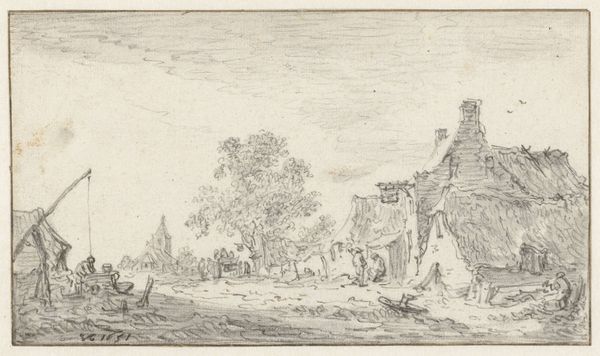
drawing, pencil
#
drawing
#
dutch-golden-age
#
pencil sketch
#
landscape
#
pencil
Dimensions: height 175 mm, width 293 mm
Copyright: Rijks Museum: Open Domain
Curator: Francois van Knibbergen, a Dutch Golden Age artist, rendered this delicate landscape near Voorburg sometime between 1607 and 1665. Executed in pencil, it's a remarkably serene composition. Editor: The first thing that strikes me is how gentle it feels. The light is soft, the lines are almost tentative, and it gives the impression of a peaceful, quiet moment captured in time. It reminds me a little bit of a memory. Curator: I agree, there's an understated quality to the sketch. Considering the socio-political landscape of the Dutch Republic during that period—a burgeoning merchant class, increased urbanization, and complex religious tensions—Knibbergen's work offers a glimpse into a society grappling with transformation through the lens of landscape. How does it speak to the power dynamics of its period? Editor: That's interesting! The windmill takes center stage. Back then, windmills were pivotal, both vital tools of sustenance and symbols of power and innovation, perhaps? And then you see the distant church spire, just barely visible... Is the artwork juxtaposing those societal powers? It's not necessarily a battle scene, but a quiet representation of potentially conflicted symbols? Curator: Exactly! One way to examine such art is through the framework of cultural geography. By contrasting the industrious windmill, often associated with human ingenuity and economic progress, with the distant, smaller church, the artwork engages with emergent challenges to religious hegemony during that era. Editor: Thinking about the artist's own experiences makes you consider that! I like how he rendered the sky— those quick, spiraling lines create a sense of movement, suggesting the winds that power the mill, perhaps? The details invite lingering reflection about something very present and alive and necessary to the landscape in front of him. Curator: Perhaps the piece also offers a kind of quiet resistance to overly celebratory or triumphalist art common to that era. By focusing on daily life through a tranquil landscape, it gives space to more common people and activities. It doesn't scream about the powerful; instead, it whispers a more grounded story. Editor: Absolutely, and it makes me appreciate its gentle quality even more! The sketch has a lot of depth, literally. It gives this sense of peace amid constant activity and flux in a changing time. A nice, balanced story, after all. Curator: I agree. Thank you for helping contextualize its narrative—landscape offers more than a peaceful pastoral scene.
Comments
No comments
Be the first to comment and join the conversation on the ultimate creative platform.
